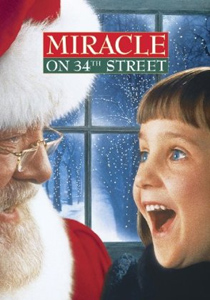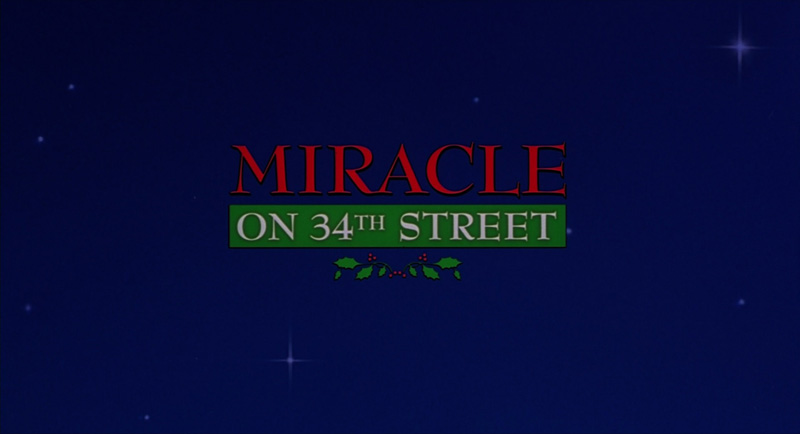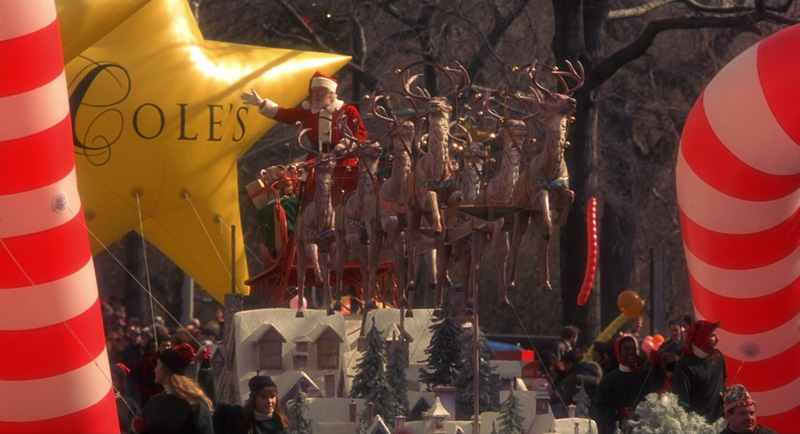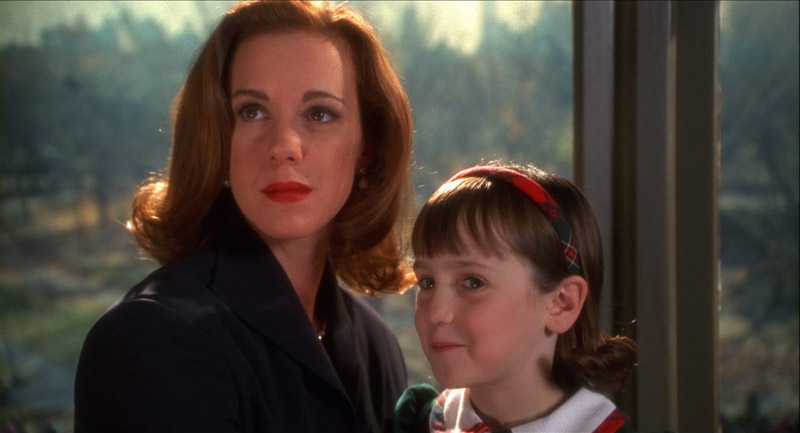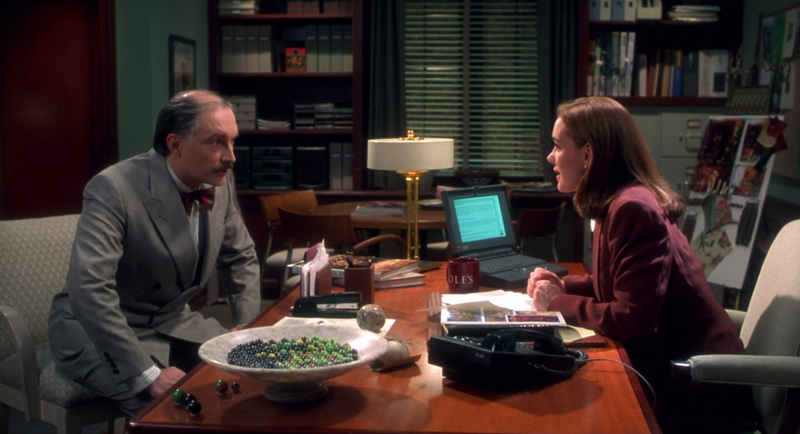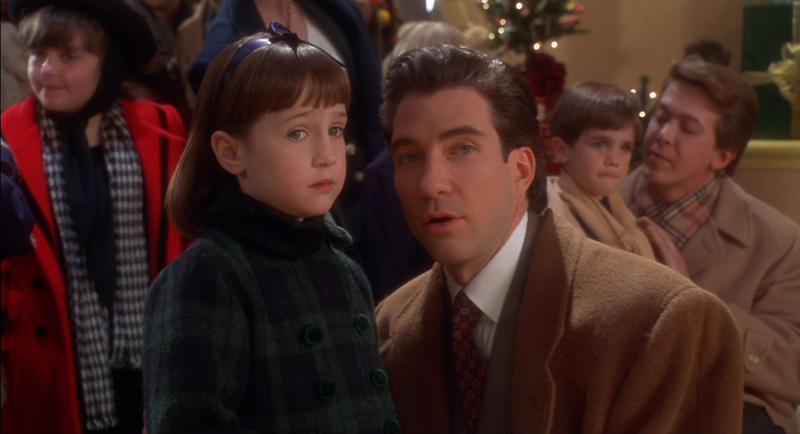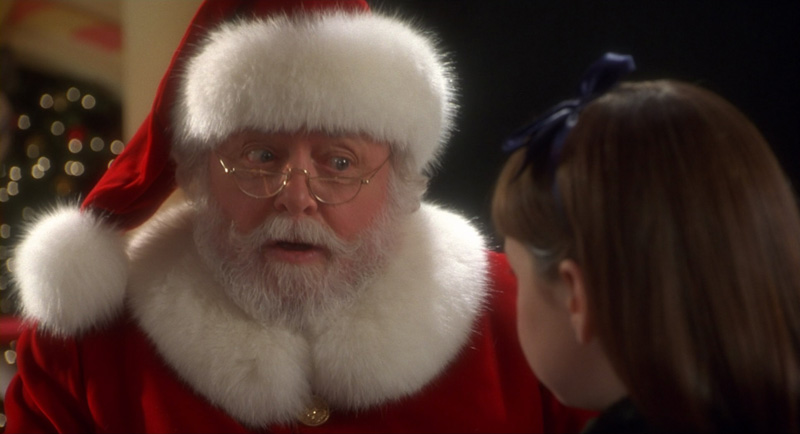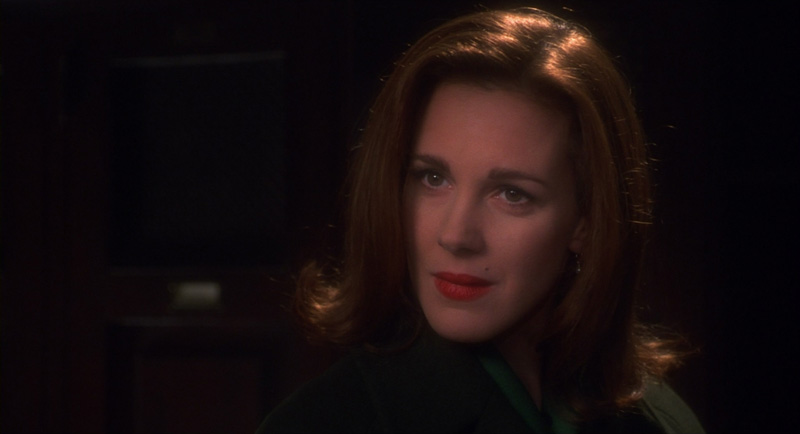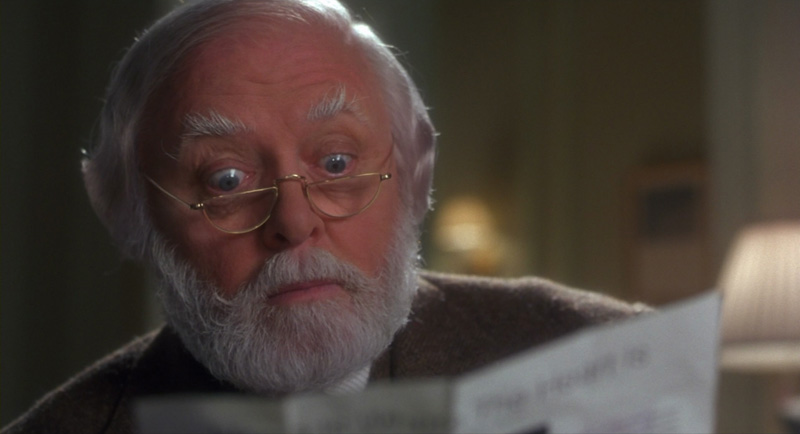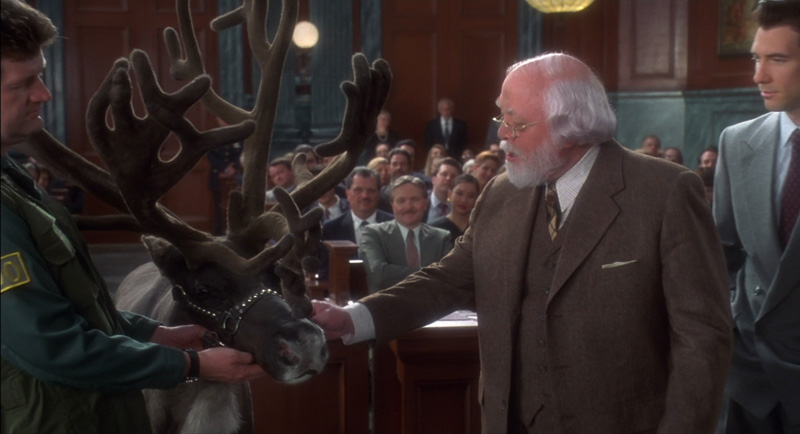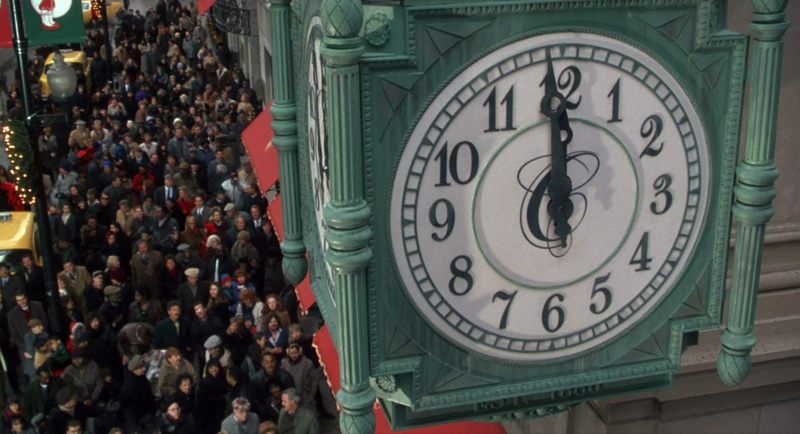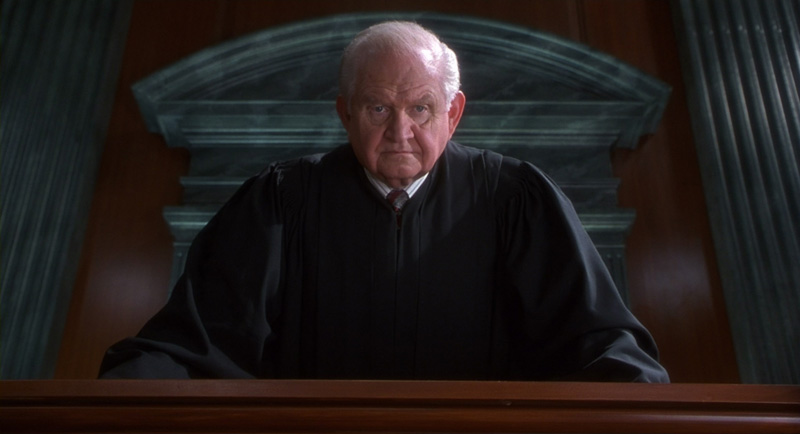Review by Leonard Norwitz
Studio:
Theatrical: Fox & John Hughes
Blu-ray: 20th Century Fox Home Entertainment
Disc:
Region: All
Runtime: 113 min
Chapters: 24
Size: 25 GB
Case: Standard Blu-ray Case
Release date: October 6, 2009
Video:
Aspect ratio: 1.85:1
Resolution: 1080p
Video codec: AVC @ 18 Mb21
Audio:
English DTS HD-Master Audio 5.1; English 5.0 DD, Dub: French
DD
Subtitles:
English SDH, Spanish & French
Extras:
• (zip)
The Film:
6
I had thought the matter of Santa's true identity was laid
to rest in 1947 when not only the United States Postal
Service, but the Academy of Arts & Sciences, assured us it
was Edmund Glenn. But it was not only Sir Richard
Attenborough who had his work cut out for him: John Hughes,
the man who gave us Matthew Broderick, Molly Ringwald and
Macauley Culkin – you see the trend - may have figured that
he was about ready to tackle a script with a real child.
Hmmm.
So, besides being in true color, widescreen and sporting a
bang-up soundtrack – for the opening chorus at any rate -
what do Mr. Hughes and company have to say for themselves?
Well, for one thing, the remake kind of redefines the
miracle (more on that shortly); but for the most part what
it does is try to right what they (and other modern critics)
see as a shortcoming in the original: the romance between
Doris (here played by Elizabeth Perkins) and Fred Gailey (in
one of the few character name changes from the 1947 movie,
here named Bryan Bedford, possibly so that audiences would
not get the "wrong" idea from "Gailey", played by Dylan
McDermott). I was never one to find the O'Sullivan/Payne
romance lacking in relationship to start with, but more on
that much later.
Being the kind of concrete literalist that I am, I have this
thing about titles: that they ought to guide our feeling
about the events unfolding. They should engage expectation.
We learn in one of the bonus features for the 1947 film that
George Seaton’s original story had no title, and none of the
beta titles that came along incorporated the notion of a
“miracle.” Even so, we have come to respond to what is given
as well as the movie’s legacy, and the notion of a “miracle”
is there to stay. So, I ask: What miracle do you think
happens in either or both of the two movies?
I admit it's a trick question, because the "34th Street"
part of the title non longer has the cache as the center of
a certain universe, especially at the corner of 34th Street
& 5th Avenue and 34th Street & Broadway, a mere block apart.
The latter is the location of Macy’s Dept Store where Kris
Kringle is hired to greet the children. It's also where King
Kong climbed the Empire State Bldg. And George M. Cohan
remembered himself to Herald Square. Gimbel’s is on 33rd
St., just a block distant. Since the Walkers and Fred Gailey
(or Bryan Bedford) live some distance uptown from 34 St.,
and the courtroom is somewhere else altogether, and the
house that Kris arranges for them is out of town, I suspect
the complete title is an attempt to cash in on celebrity.
Still, I think, the question about the "miracle" is still
worthy of pursuit.
While you're giving the matter a think. . .
I used to live in New York City way back when the
competition between Manhattan’s two largest department
stores was like that between the Yankees and Dodgers when
the two teams lived across the river from each other. For
the longest time I took it that the “miracle” was Macy’s and
Gimbel’s shaking hands, and everything about the competitive
Christmas spirit which that act symbolized. These giants of
industry came to see that commercial interests were
consistent with customer’s needs – a radical concept even
today. We learn in the supplements to the 1947 Blu-ray that
the movie was completed prior to the approval necessary from
the heads of the two department stores. If either denied
their blessing, huge chunks of the movie would have had to
be rewritten and reshot. That both stores gave the movie a
thumbs up is a miracle in kind.
The new movie has no Macy’s, no Gimbel’s, and no
rapprochement between their stand-ins. Instead, the
“miracle” is seen elsewhere: Perhaps it is that the “people”
come out into the streets in support of Kris, in support of
the Christmas spirit in a kind of bloodless coup. In the
context of the movie, the idea works very well since it
helps to give impetus to the judge’s final decree.
There’s a naiveté in Seaton’s original that makes the whole
thing work which does not exist in the remake. Hughes
analyses and explains and is careful about how he goes about
it. The judge’s wording when he talks about “In God we
trust” is a brilliant exercise in diplomacy, but by the time
we get there, what innocence there might have been has been
pared away. Seaton’s “Faith is believing when common sense
tells you not to” may be simple-minded and hardly a generous
explanation of faith, but it does describe well enough the
relationship between faith and reason.
Spock is a fascinating, imperfect embodiment of anti-faith.
He believes only in reason (what he calls “logic”). So does
Doris, and for similar reasons. Spock comes to logic as a
way of “controlling” his emotions, so that they will not
rule him. Doris won’t believe in anything she can't see,
touch or hear because she has been hurt by someone she
trusted. The offshoot of that hurt is Susan, so it is only
natural, if ill-advised, that she try to inoculate her
daughter against the inevitable pain of betrayal. Natalie
Wood’s Susan has completely bought into her mother’s notion
about the universe, though she doesn’t know why her mother
feels as she does.
But this is not Mara Wilson’s Susan, and it is the one
dynamic in the remake that gives the movie a spark. The new
Susan is younger than Natalie (almost 3 years) and wants to
believe in magic and Santa, and she wants to trust others
who are kind to her. She doubts her mother's counsel, though
she respects and loves her too much to actually tell her
directly that she harbors a secret desire to believe and
trust as a child. Both Mara and Natalie devise a test for
Kris to prove whether he is Santa Claus or just a nice man
with a beard. It is an absurd test at any level, and both
movies try to work around its absurdity. Hughes allows Mara
to be satisfied with two out of three, but he goes to the
trouble of showing us the smoke and mirrors that made her
wish come true.
This is a huge mistake, for it allows common sense – i.e.
reason – to creep in and explain what faith should have made
manifest. Susan’s test is a child’s version of Doubting
Thomas or Doubting John Denver: Show me a miracle and then
I’ll know you’re God, and then I know I’ll be safe when I
take the leap. If it were that easy there would be no magic
to faith, no miracle in our own confrontation of our
personal demons, and no reason to believe in Santa Claus.
Doris’ conversion is the penultimate miracle in both movies.
Neither script explains it; she just knows that she has to
support Kris and Fred (Bryan) despite the implications. She
is swept away by the euphoria this produces, as is everyone
else (or nearly), and in the midst of this euphoria comes to
accept him as Santa Claus. Hughes tiptoes around this. He,
himself, is not convinced. This is why he has to explain the
house and why the house is necessary to convince both Susan
and Doris. Seaton does believe, and offers no explanation
for the house, which is also why he doesn’t have to explain
why Doris and Fred fall in love, which is, after all, the
ultimate miracle.
Image:
8/9
NOTE:
The below
Blu-ray
captures were ripped directly from the
Blu-ray
disc.
The first number indicates a relative level of excellence
compared to other Blu-ray video discs on a ten-point scale.
The second number places this image along the full range of
DVD and Blu-ray discs.
What strikes us first is the rich color, especially red, and
the pure white. It's so creamy it looks good enough to eat.
These are Santa's colors, after all. There is a certain
vivid look to the picture in general, reminiscent of
Technicolor. It looks like the softness comes from
filtration applied at the camera, rather than during the
transfer process, which is done quite well, I thought.
Audio & Music:
6/8
The room-filling opening chorus that accompanies the credits
suggests a promise of a soundstage worth writing to Santa
about, but it is not to be. Given the opportunities – the
parade and the bustle of the department store – is
surprisingly devoid of ambient information. Aside from that
oversight, the dialogue remains crisp and clear.
Operations:
6
The disc loads quickly enough (it's only single-layered)
and, having no extra features, has only chapter thumbnails
to guide us on our merry.
Extras:
0
(You're going to buy the 1947 version anyway, and that one
has quite enough.)
Bottom line:
6
What can I say: the movie is much better than I expected,
but it does go too far trying to politic and rational. The
image is lovely and the audio clear. No supplements, though.
If you must have your Miracle in color, this may be the
better alternative to the colorized 1947 film, but do try it
in Black & White first.
Leonard Norwitz
October 22nd, 2009
![]()
![]()

![]()
![]()
![]()
![]()

![]()
![]()

